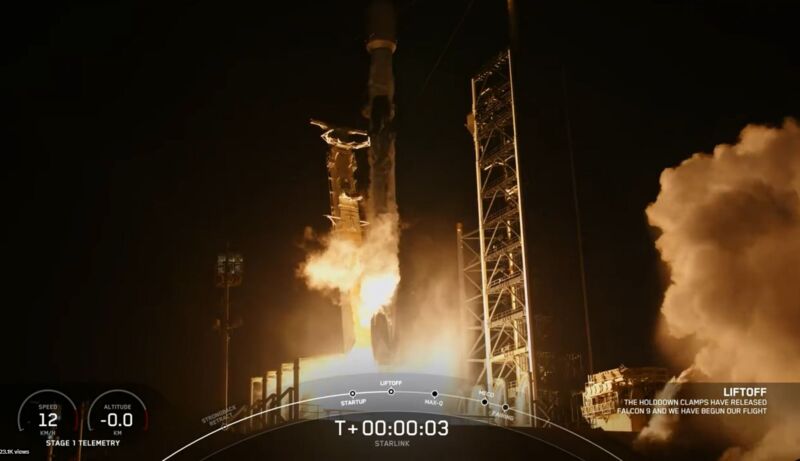
SpaceX Webcast
Early Saturday morning, at 1:45 a.m. local time, the Falcon 9 rocket lifted off from its launch pad at the Kennedy Space Center in Florida.
By some measures, this is a fairly routine mission — this is SpaceX’s 73rd launch this calendar year. Like several Falcon 9 launches this year, the “Starlink 10-9” mission carried 23 broadband Internet satellites into orbit. However, after a rare failure earlier this month, this particular Falcon 9 rocket is back in flight for the company, and is attempting to return the world’s most active booster to service.
And by all measures, it worked. The first stage booster, B-1069, added its 17th flight to orbit before landing. Read the instructions A drone cruises across the Atlantic Ocean. Then, an hour after liftoff, the rocket’s second stage released its payload into a favorable orbit from which the Starlink spacecraft will use their on-board thrusters to reach operational altitudes in the coming weeks.
A crack in the sense line
The Falcon 9 rocket failed 15 days earlier, during a Starlink launch at 7:35 PM PDT (02:35 UTC) on July 11 from the Vandenberg Space Force Base in California. During that mission, a few minutes after separation, an unusual accumulation of ice was observed in Merlin’s vacuum engine driving the vehicle’s second stage.
According to the company, Merlin’s vacuum engine successfully completed its first burn after secondary separation. However, during this time a liquid oxygen leak developed near the engine – leading to the formation of ice that was observed during the webcast.
Engineers and technicians were able to quickly find the cause of the leak, a crack in the “sense line” to a pressure sensor connected to the vehicle’s liquid oxygen system. “The line cracked due to fatigue caused by engine vibration and generally a loosening of the clamp that holds the line,” the company said. In an update Published ahead of publication on Saturday morning.
The leak overcooled the engine and led to a limited amount of ignition fluid available before Merlin was re-ignited for its second burn to circle the rocket’s orbit before releasing the Starlink satellites. This caused a rough start of the Merlin engine. Eventually the satellites were released into low orbit, and within days they burned up in Earth’s atmosphere.
The failed sense line was unnecessary, SpaceX said. It is not used by the flight safety system and is covered by alternative sensors already in the engine. Soon, the Sense line will be removed from the secondary engine for Falcon 9 launches.
During a news conference Thursday, SpaceX Director Sarah Walker said the Sense Line was established based on customer demand for another mission. He said the only difference between this component and other commonly flying sense lines is that it has two connections instead of one. This leads to a slight crack and may be a little more susceptible to vibrations.
Fast turnaround
SpaceX identified the cause of the failure within hours of the anomaly, and the Federal Aviation Administration worked to come up with a quick fix. On Thursday, the missile company received permission to return the aircraft.
“It was incredible to see how quickly the team was able to identify the cause of the crash and then the associated corrective actions to ensure success,” Walker said.
Before the failure on the night of July 11, SpaceX had not experienced a mission failure on a Falcon 9 rocket in 297 launches prior to the Amos-6 launch pad explosion in September 2016. The short interval between the previous failure, the month, and Saturday’s return to flight, appears to be unprecedented in the history of spaceflight.
The company now plans to launch two more Starlink missions later this week on a Falcon 9 rocket, one to Cape Canaveral Space Force Station in Florida and Vandenberg Space Force Base in California. It has three additional missions before NASA’s critical spaceflight for Crew-9, which could occur on August 18.
As a result, NASA was involved in an investigation into the failure of the second stage. Steve Stich, manager of NASA’s Commercial Crew program, said SpaceX did an “extraordinary job” of identifying the root cause of the failure, then quickly looked at its Dragon spacecraft and the first stage of the Falcon 9 rocket to confirm there were no other sensors. This can cause similar problems.